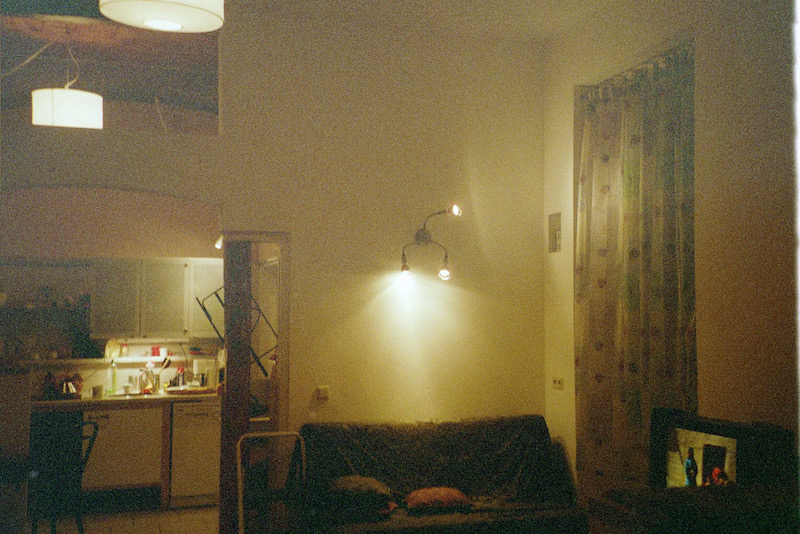Vienna, Austria
Visiting Vienna in 2003
We came to Vienna from Budapest. We had heard and knew a lot about Vienna. In this post, I will share with you the beauty of Vienna, as we saw it, through my amateur photography. I hope that it will be inspirational enough to make you plan a visit there.
The first thing we did was to book an apartment online instead of staying in impersonal hotel rooms. It was an interesting travel experience because though we were away from home, we felt at home. The location was near public transportation, within walking distance of many tourist attractions, and a shopping and eating area.
Marijan Uzlec, the landlord of the apartment, is a caring, generous and helpful person. We have kept in touch with him for the last 17 years. He owns two apartments in a centrally located building. He lived in one apartment and the other self-catered one he used as a rental property. He immediately made us feel at home. A finely decorated and carefully furnished, the comfortable apartment had everything one could wish for. Much thought had gone into designing and furnishing it for optimal use. We fell in love with the decor (especially the window treatment with decorative textile) so much that we used some of the features in our apartment in India. The pantry was fully loaded, and we had permission to use whatever we needed. His collection of books was pretty impressive also. He even had copies of classic English literature. I found one of my favorite authors, Thomas Hardy’s Tess ofd’urberville, which I read while there.
Here are some of the Historic Building Pictures I took while visiting Vienna.

Hofburg was a palace for Habsburg dynasty rulers and an official residence and workplace for the President of Austria. This opulent building is located in the center of Vienna and was built in the 13th century. Since, it has been expanded, renovated, and changed several times.

The Parliament Building in Vienna is where the two houses of the Austrian Parliament conduct their sessions. The building is located near Hofburg Palace and the Palace of Justice. All important state ceremonies, such as the swearing-in of the President of Austria and the National-Day speech on October 26 every year, are held in the Parliament building.

This Gothic Masterpiece has latticework spires. Inside there are catacombs that have the remains of the Hapsburgs.

Neo-Gothic Rathaus (City Hall), a majestic building, is the seat of local government in Vienna. It looks down onto a central square and a park alongside Vienna’s main boulevard.

Holocaust Memorial in Judenplatz, Vienna, designed by British artist Rachel Whiteread’s was dedicated in Vienna on October 25, 2000, despite the rancor that had caused four years of delays. In the end, the memorial was embraced by former opponents.
The blocky concrete structure resembles an inside-out library, with the imprints of rows of books lining the outer walls. Inscribed around the base are the names of Concentration Camps. The work’s facade bears German, Hebrew, and English dedication to the 65,000 Austrian Jews killed in the Holocaust.
Located in the middle of Judenplatz ( a town square in Vienna’s inner Stadt (city) that was the center of Jewish life and the Viennese Jewish Community in the Middle Ages), the memorial rests over the remnants of a synagogue that was burned down in 1421. Construction was held up by opposition from all sides: local residents protested that the structure was ugly, would take away their parking spaces, and would attract trouble; the Jewish community complained, saying that it played on stereotypes of Jews being “People of the Book”; Jorg Haider’s right-wing Freedom Party simply didn’t want it. , After the Synagogue was excavated, organizers decided to incorporate the ruins into the overall project. They shifted Whiteread’s monument by several feet so that it would not be above the site of the synagogue’s bimah, the rostrum where the scroll of the Torah is read, which Jewish law forbids.

There was a plague epidemic in Vienna in 1679. During the epidemic, Hapsburg emperor, Leopold1 promised to build a mercy column if the plague should end as a sign of his faith in God. The column was built and inaugurated in 1694 and is a memorial to the worst plague in Viennese history. The emperor approved a version of the column featuring the holy trinity and nine angels. At first rudimentary column was built of wood, and subsequent revisions resulted in the final version, inaugurated in 1694.
Vienna is considered one of the most popular tourist destinations in Europe. It is famous for its traditional cafés, stunning palaces, and rich history. . It is hard to sum up, the Vienna experience: its sights and scenes, and glamorous buildings. St. Stephans Cathedral is just one example of magnificent monuments and witness to Austrians’ history and architectural capabilities. The indescribable beauty of St. Stephens Cathedral will forever be etched in my memory.
While in Vienna, we took a day- trip to Salzburg, Mozart’s hometown, by bus, which was a scenic road trip. More on it next.















the pictures are amazing. i can’t imagine how emotional it must be to see the holocaust memorial
love this blog
Thank Julie for your feed back. later on in the trip, we also visited Auschwitz Concentration Camp.Poland was our last destination on this trip.
Great content and beautiful pictures! Enjoyed reading your blog, Rasheeda!
Thank you for a nice comment. It is important to get a positive feedback.
Hello Rashida, A very thorough and interesting blog. A querie though…In the second paragraph relating to the Jewish Memorial, you mention “Dedication to the 65,000 Australian Jews killed in the Holocaust” …65000 Australians dying in the Holocaust… Australians? Maybe you mean Austrians? [I’m from Australia so it comes as a surprise that there were Australians that died in the Holocaust]. Just asking.